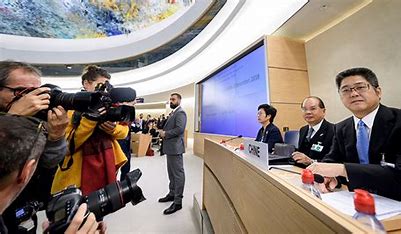
The Securities and Exchange Board of India (SEBI) via its circular SEBI/HO/IMD/IMD-PoD-2/P/CIR/2023/118 dated 7th July 2023 has introduced a new regulatory framework for private equity funds sponsoring a mutual fund house and self-sponsored AMCs to increase the industry’s growth and make it easier for new businesses to become sponsors. It has put in place a number of new approaches to promote innovation, stimulate competition, and guarantee that existing sponsors can merge with other sponsors and exit the market with ease in an effort to improve the mutual fund business in the country.
Strengthening Asset Management Companies (AMCs)
One of the key provisions of SEBI’s regulatory framework focuses on how Asset Management Companies (AMCs) utilize their liquid net worth. Asset management companies (AMCs) are firms that place client funds that have been pooled into different investments. In addition to giving alternatives to smaller investors through mutual funds, index funds, and ETFs, they manage portfolios for high-net-worth individuals, hedge funds, and pension plans. AMCs are sometimes known as money managers or money management companies.
Under the new regulatory framework, AMCs are now required to invest a minimum share of their net worth in assets with high liquidity. AMCs may allocate their net worth to a variety of assets, including cash, money market instruments, government securities, treasury bills, repo on government securities, or listed AAA-rated debt securities, in order to comply with this requirement. By placing a strong emphasis on liquidity, SEBI wants to make sure that AMCs have the money on hand to fulfill investor redemptions and other financial commitments ensuring AMCs’ overall financial stability along with supporting investor confidence.
Pooled Investment Vehicles as Mutual Fund Sponsors – Fostering Private Equity Participation
Private equity funds (PEs) have been recognized by SEBI for their sponsorship of mutual funds. It is an investment structure that allows investors to pool their funds and make direct investments in private businesses. These funds aren’t traded on the stock exchange, in comparison to publicly listed equities. A limited liability partnership or company is often responsible for managing the PEs. The fund is managed by a group of experts who also solicit funding from investors. The money obtained is then put to use financing a variety of projects including buying other businesses, funding start-ups, or lending money to private enterprises for growth or restructuring. By actively participating in the management and operations of the firms they invest in, PEs frequently seek to add value to such businesses. They could offer strategic direction, or assist the business to perform better so that investors can profit.
As per the new regulations, PEs may serve as sponsors under certain conditions i.e., applicant PE (scheme/fund) must be a body corporate in its own right or one that has been established by a PE. The requesting body corporate may be established in India or abroad. The PE or its management must have a proven track record of managing significant money combined with a minimum of five years of experience as a fund or investment manager. The requirements set by SEBI for PEs guarantee that they have the knowledge and resources needed to serve as sponsors of mutual funds. The required five years of experience indicates knowledge of industry trends, fund management procedures, and regulatory compliance. Further, by allowing PEs as a sponsor, investors benefit from a wider choice of investment options and sponsors with diverse investment philosophies.
Self-Sponsorship of AMCs – Empowering Independence and Governance
Given the evolving dynamics of the mutual fund sector, the Board has also permitted sponsors to voluntarily lower their ownership position in an AMC. An AMC may fulfill the criteria to qualify as a “self-sponsored AMC” under certain circumstances. These prerequisites include having a positive net worth, a profitable track record, and a minimum of five years of company experience in the financial services industry. With this self-sponsored AMCs will have more control over their operations, investment strategies, and decision-making processes since they are less dependent on outside sponsors. The mutual fund business may become more flexible and innovative as a result of this independence. By enabling this, the board aims to promote financial responsibility and independence.
However, in case a self-sponsored AMC doesn’t fulfill the required standards, SEBI permits a disassociated sponsor or a new organization to take over as the Mutual Fund’s sponsor. In order to guarantee their acceptability and conformity with industry standards, the potential sponsor must satisfy all legal criteria and secure SEBI’s approval.
Importance of Mirror Image Shareholding: Enhanced Governance and Control
The regulatory framework’s need for mirror image shares in trustee companies is an important aspect as it aims to improve governance and transparency in the mutual fund sector. In a mirror image shareholding arrangement, the trustee company’s ownership and control are identical to those of the Asset Management Company (AMC), which sponsors the mutual fund. In this arrangement, the distribution and proportion of shares held by the trustee company resemble those of the AMC. This indicates that the shares held by the AMC’s shareholders in the trustee company directly reflect their ownership in the AMC.
In the case of listed AMC’s mirror image shareholding guarantees that the ownership composition of the AMC trustee firms is identical to that of the AMC itself. This alignment provides a clear depiction of the ownership and control structure inside the organization and acts as a vehicle for transparency and consistency. The trustee firm can successfully carry out its supervision responsibilities and make independent judgments that are consistent with the interests of the investors by keeping its ownership structure the same. On the other hand, for unlisted AMC trustee companies, the requirement of mirror image shareholding also provides a consistent shareholding structure between the trustee company and the AMC. This prevents any variation or divergence in holdings, supports reinforcing the integrity of the governance structure, and strengthens investor confidence.
Therefore, the new regulatory framework’s need for mirror image shares in trustee firms is an important point. It highlights the role trustee companies play in preserving investor interests and enforcing regulatory requirements. Regardless of whether the AMC is listed or not, it emphasizes the requirement for consistency and transparency in ownership patterns between the trustee business and the AMC.
Compliance and Auditing: Ensuring Regulatory Adherence and Reporting
In order to guarantee regulatory compliance and reporting within the Mutual Fund sector, SEBI has also set out compliance and auditing criteria. The trustees and the Board of Self-sponsored AMCs are required to provide compliance reports half-yearly and quarterly, while the statutory auditor of a mutual fund must submit a yearly compliance report.
These reports evaluate the Fund’s compliance with the legal requirements and aid in locating any potential problems. While auditing assures the accuracy of financial reporting and the efficacy of internal controls, compliance reports are essential for upholding transparency, investor protection, and market stability, helping reinforce regulatory compliance and enhance better industry practice.
Conclusion
The regulatory framework for Mutual Fund sponsors that have been established acts as a crucial turning point in the industry’s revival. The sector is being propelled to new heights of development by these steady changes, which promote innovation, competitiveness, transparency, and trust among investors.
An important component of the regulatory changes is empowering AMCs by enabling them to stand on their own, encouraging independence, autonomy, and responsibility by enabling flexibility in the deployment of net worth, and permitting self-sponsorship. Investors are given confidence by this autonomy, which shows them that AMCs can make wise investment choices and look out for their best interests. The strict sponsor eligibility requirements, open ownership structures, and heightened compliance and auditing requirements all reflect the legislative measure’s emphasis on protecting investors. These actions increase investor confidence and trust, which promotes higher market involvement for mutual funds.
In light of this, it can be concluded that these changes create an environment that encourages development, healthy competition, and mutual trust. Therefore, enabling the sponsors and investors to expect a vibrant and active mutual fund industry that will open up new business opportunities.















